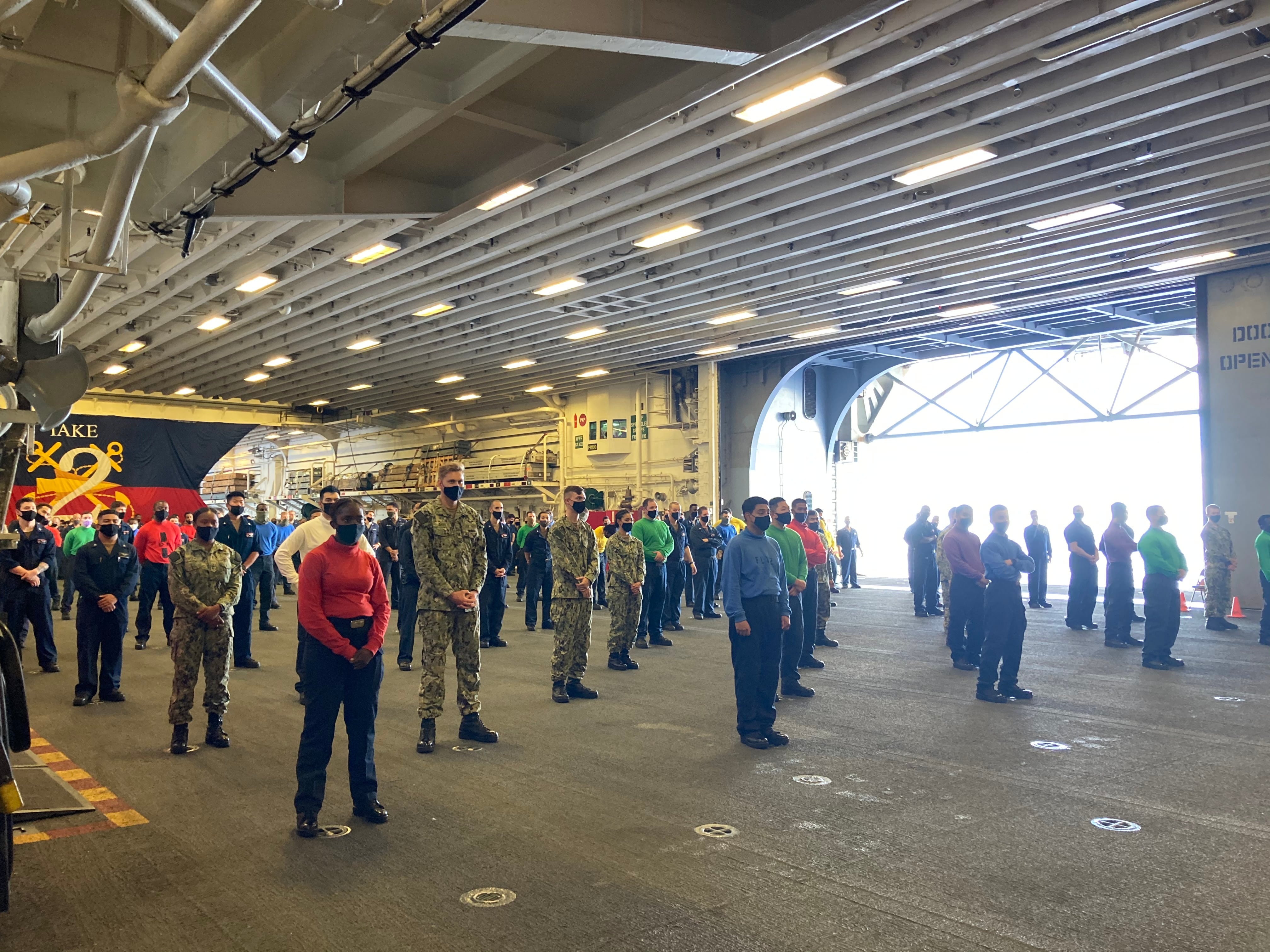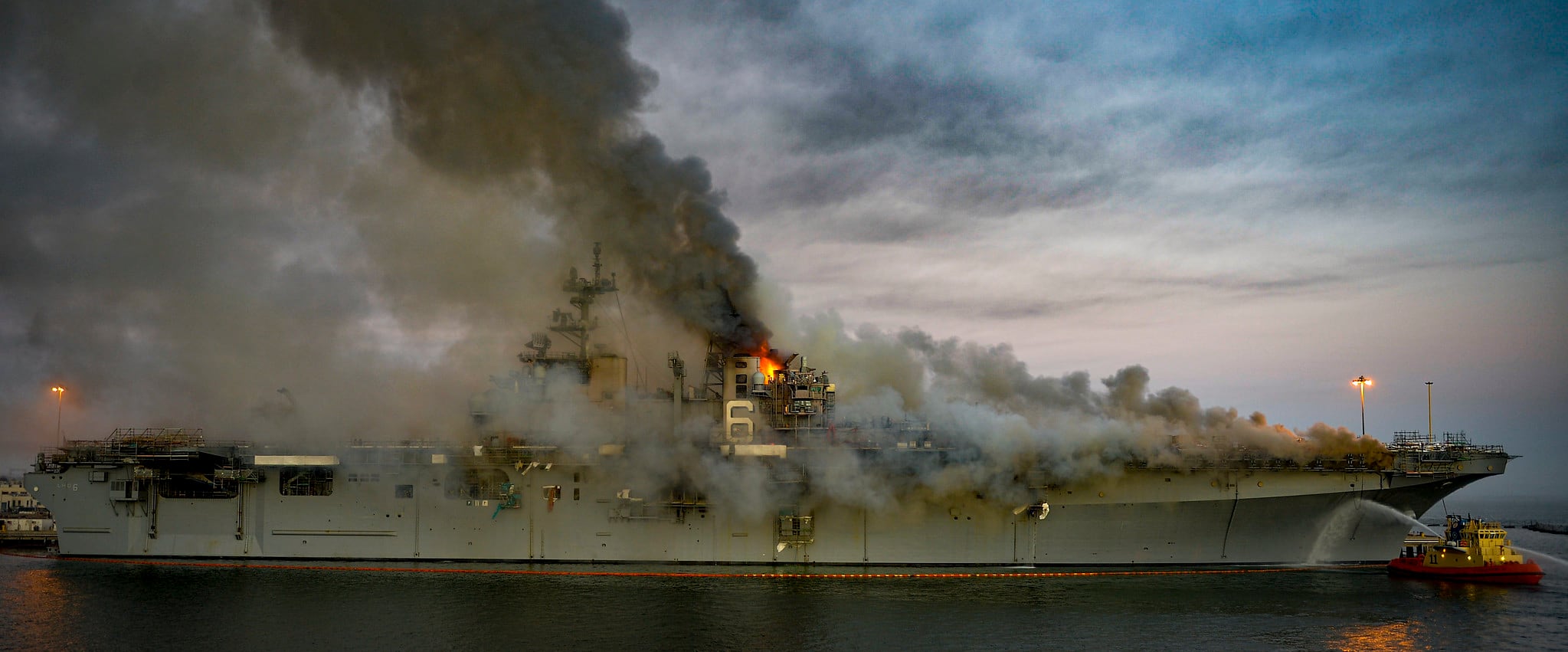Honolulu ― This year’s Rim of the Pacific exercise looks quite a bit different, thanks to COVID-19.
It’s still the world’s largest maritime exercise, but there’s a lot less international face time this year, as social distancing has replaced the time that troops might have spent visiting each other’s ships or simulating missions together on land.
“Although we’re not physically together and intermingled with each other doing joint operations, we’re still conducting operations together,” a chief assigned to the amphibious assault ship Essex, who was not authorized to speak on the record, told Military Times on Wednesday.
An alumnus of RIMPAC 2018 ― the exercise is held every other year ― the chief said the crew is still getting the experience of working with partner countries, if only over the radio, while senior leaders are “meeting” over secure video calls.
Not only is the Essex social-distancing from the roughly two dozen other countries participating in RIMPAC, they are religiously living their own infectious-disease mitigation protocol on board.

Two ships, the aircraft carrier Theodore Roosevelt and the destroyer Kidd, have had outbreaks since the beginning of the pandemic, forcing the Navy to implement strict rules for ships underway.
To start, the entire Essex crew moved on board two weeks ahead of their early August departure from Naval Base San Diego, weeding out anyone with COVID-19 symptoms or a positive test.
At sea, sailors are wearing masks consistently, as well as carving out as much distance as they can on an unavoidably cramped ship.
“As of right now, we try to stagger the racks,” the chief said, keeping berthing areas half full.
At meal times, every other seat is left open, and sailors rotate in and out during meal times, to avoid everyone trying to get chow all together.
RELATED

At the same time, the divisions are manned enough that if someone does get sick, the ship’s readiness won’t suffer.
“We have a good complement of crew who’s qualified,” he said. “If somebody does happen to get sick, or we have to have them off the ship for some reason … there’s people who can fill in their spots.”
“Cleaning stations” has also taken on a whole new meaning, he said. The crew spends half an hour every day sanitizing every surface, with additional wipe-downs of ladder wells, work stations and other frequently touched areas regularly throughout the day.
Pep talk
While visitors to the ship are much more limited than in past years, Defense Secretary Mark Esper and a small entourage came aboard Wednesday to see RIMPAC in action and have lunch with some of the crew, hosted by Pacific Fleet boss Adm. John Aquilino.
The amphibious assault ship is, “so unique, as Adm. Aquilino and I discussed, that the Chinese are trying to mimic its capabilities,” Esper said during an all-hands call. “But nobody can make up for the difference that you all make as individuals. Nobody can compete with us at that level.”
Twenty-two ships from 10 countries are participating in the exercise, which began Aug. 17 and ends Aug. 30, scaled down from the 30 originally planned.
“They all look to us, they all look to you, as the standard bearer of what a great navy looks like,” he said.
Meghann Myers is the Pentagon bureau chief at Military Times. She covers operations, policy, personnel, leadership and other issues affecting service members.





